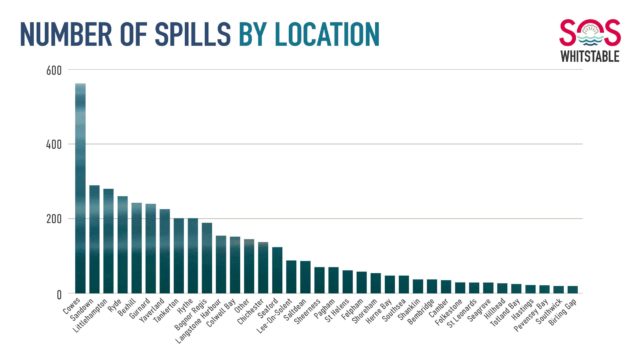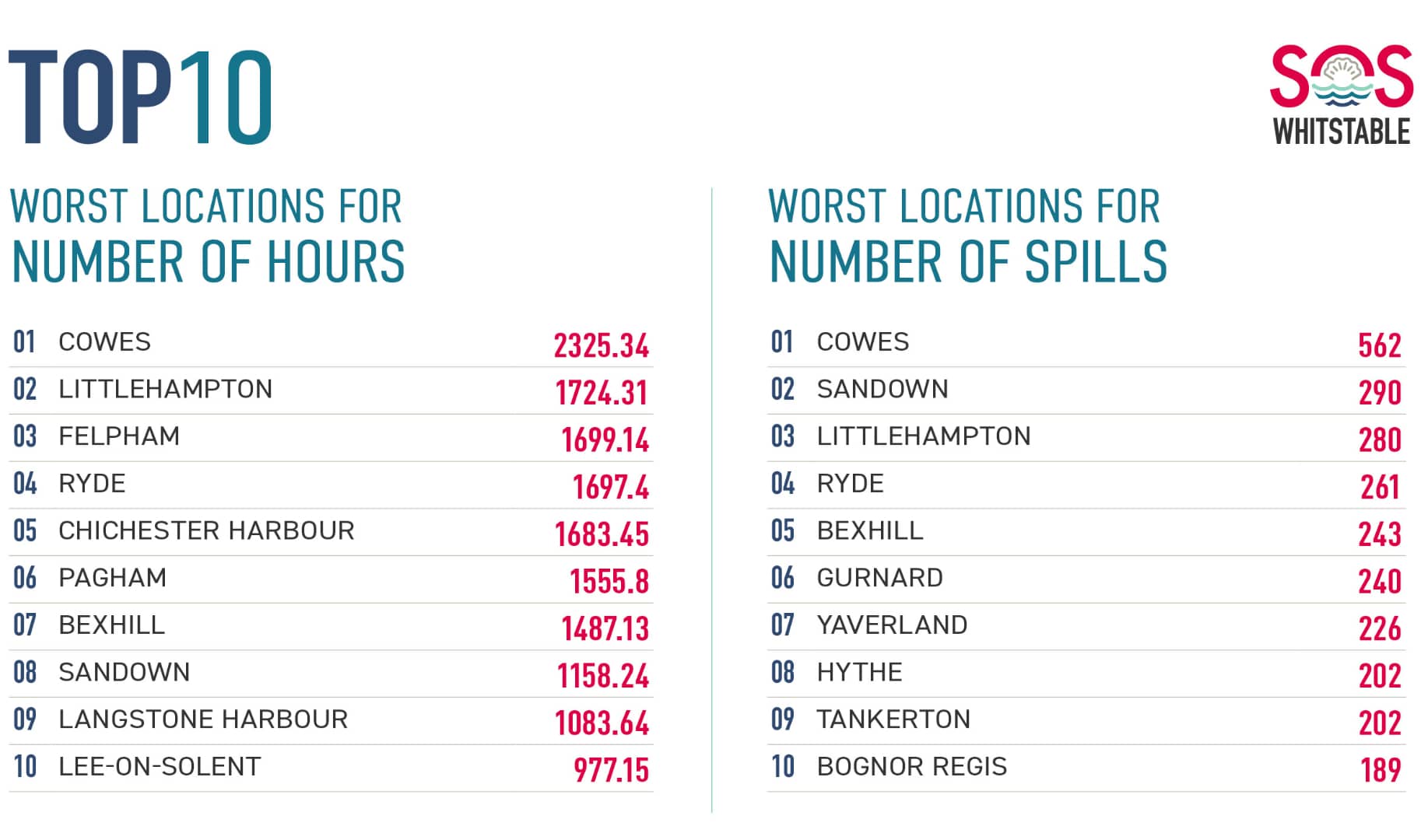The Isle of Wight has emerged as the worst affected area for combined storm overflow (CSO) releases by Southern Water.
Analysis of releases was carried out by SOS Whitstable, a water quality campaign group based in north Kent, who have been attempting to hold Southern Water to account for sewage pollution.
The data reveals that Cowes comes top of the league table as the worst location for number of hours of CSOs, as well as worst location for the number of spills.
Ryde and Sandown also feature high in the league tables.
45 per cent of all sewage released
Ed Acteson, one of the founding members of SOS Whitstable, got in touch with the data explaining that across the South East, “Southern Water released sewage into the sea 4,347 times in 2022, lasting a combined 24,124 hours”.
His research found that CSOs from the Island accounted for 45 per cent of all sewage released by Southern Water in the South East last year with a total of 10,893 hours – that’s more than Kent and Sussex combined.

Acteson: MP has serious questions to answer
Ed said,
“Given that local MP Bob Seely has repeatedly voted with the government on this issue, allowing the Conservative Party to impose sewage targets that are, in our view, a complete failure to hold the industry accountable, we feel as though he has serious questions to answer regarding the ongoing sewage pollution crisis in the Isle of Wight.”
News OnTheWight has been in contact with the MP – you can read his response here.
SW: Investing £5m at Gurnard to reduce CSO releases
Southern Water say they have “ambitious targets to significantly reduce storm overflows by 2030” across the region and have set up a Clean Rivers and Seas Task Force to “pilot innovative and collaborative ideas” through Pathfinder projects.
They say Cowes has 22 different CSO outfalls (locations) that may affect its bathing water quality, whereas some areas just have one, but that they are “investing £5m over the next two years at Gurnard to reduce CSO releases”.
SW: We know that this is not an acceptable system
News OnTheWight asked Southern Water why the Isle of Wight does so badly; why it’s occurred; what active steps are being taken to avoid this happening in the future; and when will those steps be completed.
A Southern Water spokesperson replied,
“Increased rainfall can put extra pressure on our sewer network when large volumes of surface water enter the system. To protect homes, schools and businesses from flooding, storm overflows provide a release valve to allow excess flows to enter the environment.
“These releases contain up to 95 per cent rainwater.
“However, we know that this is not an acceptable system moving forwards, and as part of £2bn of investment in our network between 2020 and 2025, we are working hard to reduce our reliance of storm overflows.
“We are doing this through a combination of innovative engineering and nature-based solutions, supported by close partnership working and an emphasis on slowing the flow of rainfall into our sewers. Our recently published annual bathing water update details how we are working to create healthier rivers and seas.”
Seely: I persuaded Southern Water to prioritise the Isle of Wight
Bob Seely MP told News OnTheWight,
“Water companies are rightly being forced by the Government to raise their game. They need to deliver, and that includes Southern Water.
“The issue of storm overflows on the Isle of Wight is a long-term one, but the water companies need to show that they understand and are reacting to concern.
“So, what is being done.
“First, government has brought in landmark legislation to significantly advance the cause of environmental clean-up in the UK. The Environment Act will set long-term, legally binding targets to improve the health of our rivers; improve water use and efficiency; halt the decline in wildlife populations; increase total tree cover; halve the waste that ends up at landfill or incineration; and make significant improvements in the condition of Marine Protected Areas.
“Second, government’s Storm Overflows Discharge Reduction Plan – published last August – requires water companies to deliver the largest environmental infrastructure investment programme in their history.
“This action is more than any other government has done to solve the problem. However, I am aware that water companies now need to deliver.
“Further to this, I persuaded Southern Water to prioritise the Isle of Wight as one of their national best practice schemes. We will be one of a small number of national ‘pathfinder’ sites and we will see millions of pounds being invested to significantly reduce sewage and storm overflows into seas around the Island.
“After Gurnard’s improvement work, Fishbourne, Wootton, Yarmouth, Freshwater, and East Cowes will all be next over the coming year. Also, investment in Water Supply Works around the Island and Waste Water Investment projects are timetabled over the next three to four years.
“So, lots is happening, but as a sea swimmer myself I absolutely understand and share the frustration when storm discharges take place.”
You can find out more about SOS Whitstable’s work by following their Twitter feed.
Article edit
9am 18th Feb 2023 – BS response added
Images: © SOS Whitstable





